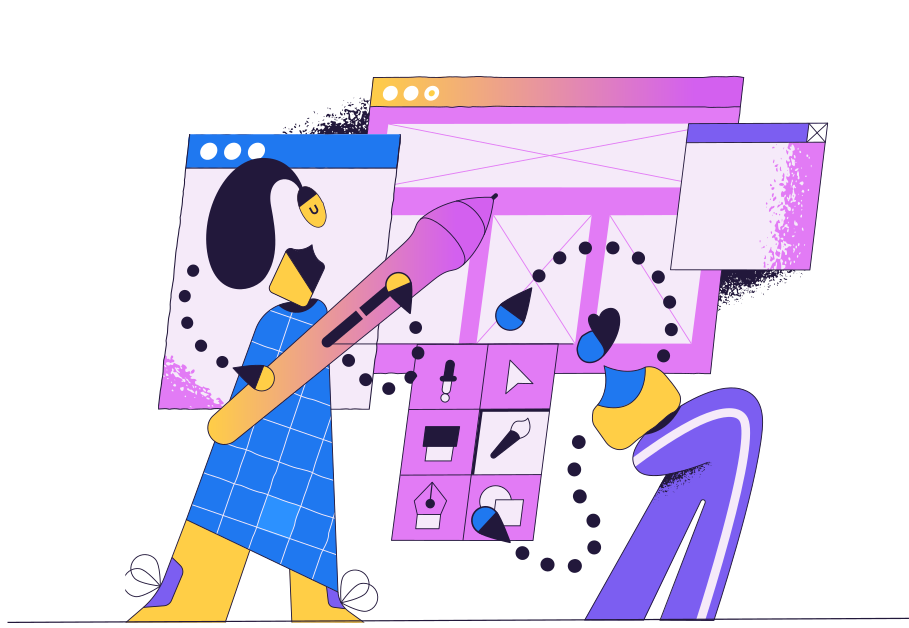Are we (really) ready for 🎨 Design System?
Design systems is the way you mention all the choices that you simply make as a design and coding organization. That's why it is so important.
Design systems are around for over 20 years, however large companies began to invest in them only few years ago.

Current scenario
While design systems bring order to handoffs and make a shared source of truth, they still require resources to be divested from more immediate needs, along side purposeful governance and maintenance.
Many companies entered 2020 asking themself when (and if) the reward was getting to eventually warrant the investment. But than Covid happened. Meetings had to be scheduled and brainstorms planned. Ideas could not be easily be shared during a chat but require to be organised.
Design systems are the way you mention all the choices that you simply make as a design and coding organization. It’s the way you collaborate handy off those decisions and make an experience in using that system.
N. Curtis, Principal and Design Systems Consulting Lead at Eight Shapes
The design process had to be systematized like never before—but many teams were more prepared for the switch than they realized. For some of them, design systems were already an in-between step that required teams to rethink collaboration and communication.
Why a good Design System is important?
Organizations scale, new features are added, old ones become obsolete and standards can change. Since design systems are constantly maintained, even by a single team, they can grow with the products they serve. As a process that starts with an audit, one of the most obvious benefits is that the audit itself helps show you where inconsistencies are in your design. It also helps teams see the most important and frequently used elements and components of a product.
An audit can also reveal weaknesses in your existing visual system. Last, creating a unified design system will speed up the design process while helping to build bridges between teams. Good design is language, and when everyone speaks the same language, it is all over.
It’s about time and context
Design systems take a massive amount of time and effort to create, and require constant work to maintain, update and evolve. The bigger, the more comprehensive, a design system is, the harder it is to reference quickly and keep relevant. Time must be invested to not only update the system but also to communicate any changes across teams.
Many product designers work for startups who undergo rebranding, product pivots and overhauls of their codebase on a dizzying frequency. Why bother with a design system in this context? No one will thank you for wasting time on an internal product when you could have been working on the actual product, getting feature validation, finding product market fit or helping marketing and sales achieve broader business goals.

It’s true that design systems allow you to go faster in some context, but by truncating the design process and placing too much emphasis on speed, design systems remove the space needed to question the assumptions behind a task, conceive of new possibilities, or even question if that new feature or screen is needed in the first place.
Design system takes a lot of time and energy to create, and it requires constant work to maintain, update, and develop. The larger and more complete the design system, the more difficult it is to quickly reference and maintain relevance. Not only spend time updating the system, but also spend time communicating any changes between the teams. Once the design system is up and running, making changes to the design system will not be an easy task, which may require double checking with people who may be different from the design. When the design is merged with the code, it can slow down or even hinder changes to the product.
Myths about it
Many product designers work for start-up companies that carry out rebranding, product pivots, and codebase revisions at a dizzying frequency. Why choose a standardized system in this situation? No one will thank you for wasting time on internal products, while you could have worked on actual products, performed functional verification, looked for products suitable for the market, or helped marketing and sales to achieve broader business goals. In some cases, it is faster, but with too much emphasis on speed, designing the system eliminates questioning the assumptions behind the task, conceiving new possibilities, and even questioning whether new features or space required for display are needed in the first place.

A good Design System is more than just a set of patterns. Developing a universal design solution is just one of the problems that the design system team must solve. Designers need to support the team that adopts the system, helping them integrate it into existing products and services. Not just once, but constantly. A good system must allow people to comment on its performances and allow designers to use this feedback to iteratively develop over time.
Do you like what are you reading? Share this post!
So, in conclusion
I think we need to understand design systems as the result of a way of thinking about design. As Bernardo’s blog writes, designers and developers want to focus their time on solving the problems unique to their product, instead of spending time reinventing the wheel on things like how navigation should work or what a button should look like.
When we choose our way of working, the tools, our focus, we need to balance all of them. Making something that meets the needs of hundreds, maybe thousands of users, accommodates organisational requirements and limitations, and is versatile enough to be reused, is really very hard and is something that a Design System (alone) can’t solve.
Thanks for reading! 🙏
If you feel like talking, connecting or just want to see what I’m up to, we’re on italianswho.design and you can contact us at info@italianswho.design



